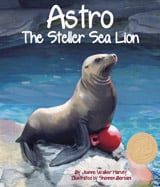Alignment to Standards for TN

| Grade | Number | Standard |
|---|---|---|
| 1 | SC-1.1.2. | Recognize that smaller parts of living things contribute to the operation and well being of entire organisms. |
| 1 | SC-1.2.3. | Examine interrelationships among plants, animals, and their environment. |
| 1 | SC-1.5.2. | Recognize that living things have features that help them to survive in different environments. |
| 1 | SC-1.5.2.a | Recognize the environment in which an organism is typically found. |
| 1 | SS-1.3.01. | Understand how to use maps, globes, and other geographic representations, tools, and technologies to acquire, process and report information from a spatial perspective. |
| 1 | SS-1.3.01.a | maps and globes are representations or models of specific places. |
| 1 | SS-1.3.01.d | Interpret symbols that represent various forms of geographic data and use these symbols to identify locations and directions. |
| 1 | SS-1.3.02. | Recognize how to identify and locate major physical and political features on maps and globes. |
| 1 | SS-1.3.02.c | Locate cities, states, countries, and continents on maps and globes and major bodies of water on maps and globes. |
| 2 | SC-2.12.1. | objects have observable properties that can change over time and under different conditions. |
| 2 | SC-2.4.1. | Recognize that living things reproduce. |
| 2 | SC-2.4.1.a | Recognize that all living things come from other living things. |
| 2 | SC-2.4.3. | Recognize that the appearance of plants and animals changes as they mature. |
| 2 | SC-2.4.3.a | Recognize that as an organism grows, its appearance may change. |
| 2 | SC-2.5.2. | Recognize that living things have features that help them to survive in different environments. |
| 2 | SS-2.3.01. | Understand how to use maps, globes, and other geographic representations, tools, and technologies to acquire, process and report information from a spatial perspective. |
| 2 | SS-2.3.01.d | Recognize that a map contains elements such as title, scale, symbols, legends, grids, cardinal and intermediate direction. |
| 2 | SS-2.3.03. | locate major physical and political features on globes and maps. |
| 2 | SS-2.3.03.a | Show how landmasses and bodies of water are represented on maps and globes. |
| 3 | SC-3.12.1. | objects have observable properties that can change over time and under different conditions. |
| 3 | SC-3.2.3. | plants and animals depend upon each other and the non-living elements of an environment to meet basic needs. |
| 3 | SC-3.2.3. | Examine interrelationships among plants, animals, and their environment. |
| 3 | SC-3.4.1. | Recognize that living things reproduce. |
| 3 | SC-3.4.3. | Recognize that the appearance of plants and animals changes as they mature. |
| 3 | SC-3.4.3.a | Describe how an organism (e.g., frog, butterfly) changes as it matures. |
| 3 | SC-3.5.2. | Recognize that living things have features that help them to survive in different environments. |
| 3 | SS-3.3.01. | Understand how to use maps, globes, and other geographic representations, tools, and technologies to acquire, process and report information from a spatial perspective. |
| 3 | SS-3.3.01.a | Show how the spatial elements of point, line, and area are used on a map or globe. |
| 3 | SS-3.3.01.c | Locate places on a map using cardinal and intermediate direction. |
| 3 | SS-3.3.03. | Demonstrate how to identify and locate major physical and political features on globes and maps. |
| 4 | SC-4.2.2.a | Provide evidence and give examples of environmental changes caused by living things. |
| 4 | SC-4.3.1. | Realize that plants and animals use food for energy. |
| 4 | SC-4.3.1.a | Explain that animals must obtain and use food for energy. |
| 4 | SC-4.4.3.a | Describe the life cycle of an animal (i.e. frog, mealworm). |
| 4 | SC-4.5.1. | Realize that plants and animals can be grouped according to similarities and differences in their characteristics. |
| 4 | SC-4.5.1.a | Classify animals, by type, according to their characteristics. |
| 4 | SC-4.6.2. | Recognize that extinction has occurred in the past and continues today. |
| 4 | SC-4.6.2.a | animal and plant populations as thriving, threatened, endangered, or extinct |
| 4 | SS-4.3.01.b | Locate places on a map using cardinal and intermediate directions, latitude and longitude, and time zones. |
| 5 | SC-5.2.2.a | Predict the consequences of a human action on the environment. |
| 5 | SC-5.3.1. | Realize that plants and animals use food for energy. |
| 5 | SC-5.4.1. | Realize that certain characteristics are passed from parents to offspring. |
| 5 | SC-5.4.2.b | Explain that the continuation of a species is dependent upon the reproduction of its members. |
| 5 | SC-5.5.1. | Realize that plants and animals can be grouped according to similarities and differences in their characteristics. |
| 5 | SS-5.3.01.b | Understand the latitude, longitude, the global grid and time zones of the sites within the United States and Tennessee. |
| K | SC-K.5.2. | Recognize that living things have features that help them to survive in different environments. |
| K | SC-K.5.2.a | Know that different organisms tend to be found in different environments. |
| K | SS-K.3.01. | Understand how to use maps, globes, and other geographic representations, tools, and technologies to acquire, process and report information from a spatial perspective. |
| K | SS-K.3.01.a | Explain what a globe and map represent. |
| K | SS-K.3.03. | Demonstrate how to identify and locate major physical and political features on globes and maps. |